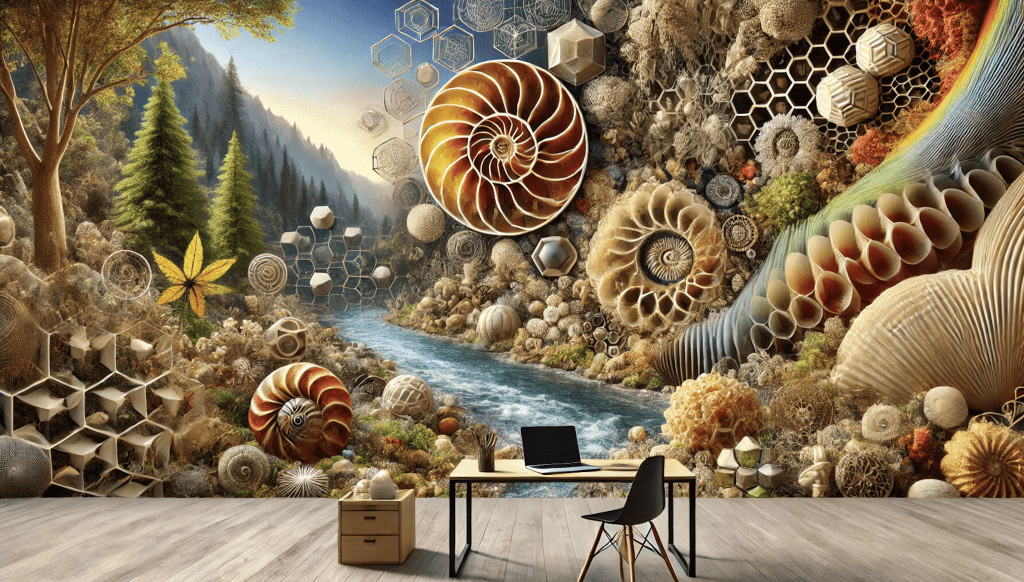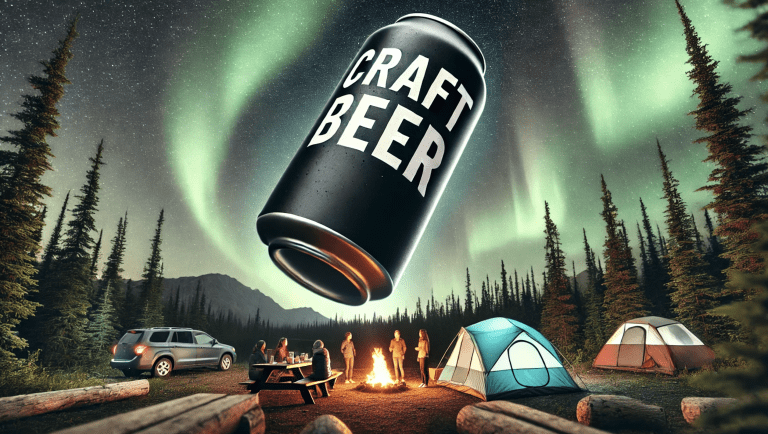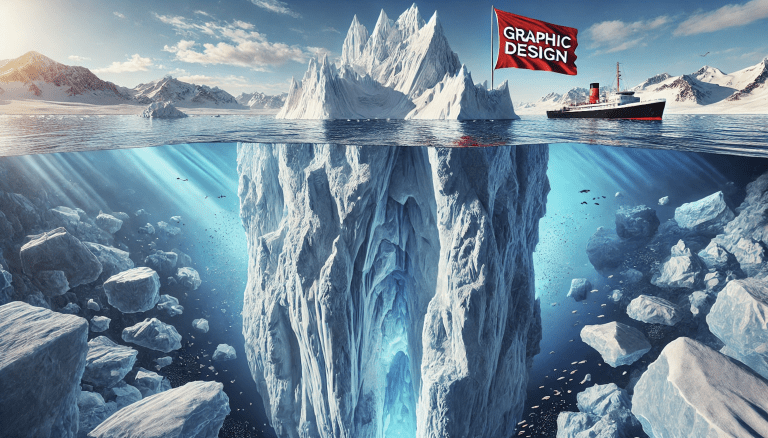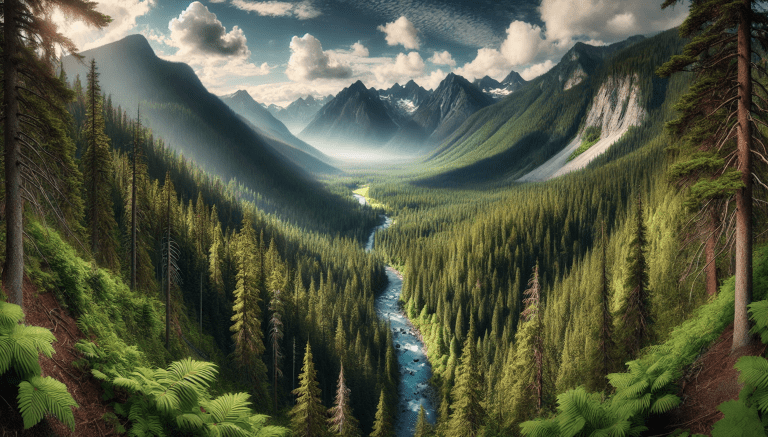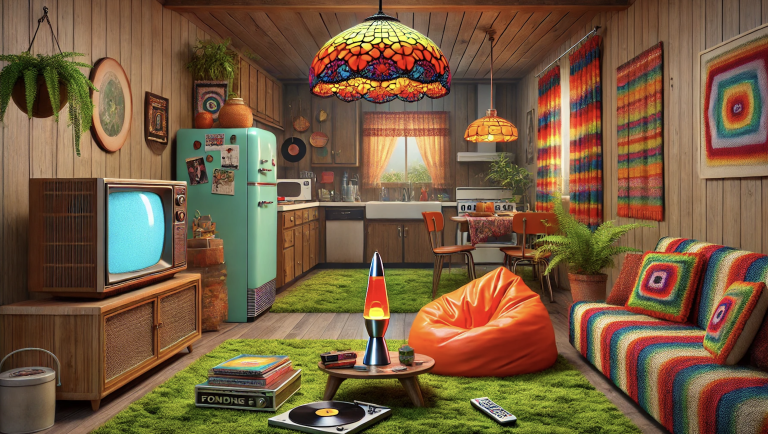In the ever-evolving world of graphic design, finding fresh and innovative inspiration is a constant challenge. Yet, one of the most profound sources of inspiration is the natural world around us. Biomimicry, the practice of emulating nature’s forms, processes, and ecosystems, offers a wealth of creative possibilities. This approach taps into the principles of natural selection, leveraging billions of years of evolutionary refinement to solve modern design problems. By observing and integrating these natural principles, graphic designers can create work that is not only visually stunning but also functional and sustainable. This article will explore the who, what, when, where, why, and how of biomimicry in design, delve into the key shapes and principles derived from nature, and provide practical applications for integrating these concepts into your design work.
Understanding Biomimicry and Natural Selection
Who Benefits from Biomimicry?
Biomimicry is a valuable tool for anyone involved in the creative process. This includes graphic designers, architects, engineers, product developers, and digital designers. By drawing inspiration from nature, these professionals can innovate and develop solutions that are both aesthetically pleasing and highly functional.
What is Biomimicry?
Biomimicry involves studying and mimicking the models, systems, and elements of nature to solve complex human problems. It’s about looking at how nature solves problems and then applying those solutions to our designs. For instance, the aerodynamic efficiency of bird wings can inspire sleek car designs, and the structure of plant cells can influence architectural frameworks.
When Did Biomimicry Start?
While biomimicry might seem like a modern concept, its roots go back centuries. One of the earliest examples is Leonardo da Vinci, who studied the flight of birds to inspire his designs for flying machines. In recent decades, biomimicry has gained prominence as we seek sustainable and innovative solutions in design and technology.
Where Can We Find Biomimicry?
Inspiration from biomimicry can be found everywhere in nature. Whether it’s the microstructures of leaves and flowers or the vast patterns of rivers and mountain ranges, nature offers a plethora of design solutions. Observing these natural phenomena can provide unique insights that can be translated into various design disciplines.
Why Use Biomimicry in Design?
Nature has undergone billions of years of evolution, perfecting its processes and designs. By mimicking these efficient systems, designers can create work that is not only beautiful but also functional and sustainable. Biomimicry allows us to harness nature’s time-tested solutions, leading to innovative and efficient designs.
How to Apply Biomimicry in Design?
To incorporate biomimicry into your design process, start by closely observing nature. Study the shapes, patterns, and systems that occur naturally and think about how these elements can be applied to your design work. This might involve mimicking the structural efficiency of honeycombs, the self-cleaning properties of lotus leaves, or the aerodynamic profiles of bird wings.
Key Shapes and Principles from Nature
Spirals
One of the most ubiquitous shapes in nature, spirals are found in everything from seashells and hurricanes to galaxies. This shape is not only visually appealing but also symbolizes growth, life, and transformation. In graphic design, incorporating spirals can evoke a sense of organic development and dynamic movement.
Example: The Fibonacci sequence, which produces a logarithmic spiral, is a mathematical representation of growth patterns found in nature. Designers can use this sequence to create compositions that feel balanced and harmonious.
Fractals
Fractals are intricate patterns that look similar regardless of the scale at which you view them. They are prevalent in natural phenomena such as snowflakes, mountain ranges, and tree branches. Using fractal patterns in design can create a sense of harmony and complexity, making your work more engaging and visually rich.
Example: The branching patterns of trees and rivers can inspire network designs in graphic elements, enhancing the organic flow and connectivity of the layout.
The Golden Ratio
The Golden Ratio, approximately 1.618, is a mathematical proportion frequently found in nature. It appears in the patterns of leaves, the branching of trees, and the proportions of human faces. Designing with the Golden Ratio can enhance the aesthetic appeal and balance of your work.
Example: Many renowned structures and artworks, such as the Parthenon and Leonardo da Vinci’s “Vitruvian Man,” incorporate the Golden Ratio to achieve visual harmony.
Hexagons
Hexagonal patterns, like those found in honeycombs, optimize space and materials efficiently. This shape can be used to create strong, stable structures and visually pleasing patterns in graphic design.
Example: The hexagonal structure of honeycombs can inspire modular design layouts that maximize space usage and provide structural integrity.
Voronoi Patterns
Voronoi patterns divide space into regions based on distance to a specific set of points. This efficient and visually striking pattern appears in various natural formations, including animal skin patterns and plant cells. Implementing Voronoi patterns in design can add a dynamic and organized feel to your work.
Example: The cell-like structures in Voronoi patterns can be used in web design to create visually appealing and functional layouts that adapt to various screen sizes.
Practical Applications of Biomimicry in Graphic Design
Functional Aesthetics
Natural shapes and patterns can be used not just for their beauty but also for their inherent functionality. For instance, the hexagonal efficiency of honeycombs can inspire layouts that maximize space and organization.
Tip: Incorporate hexagonal grids into your design to create efficient and visually appealing layouts.
Sustainable Design
Mimicking nature’s efficiency can lead to more sustainable design practices. This might involve creating designs that use fewer resources, reducing waste, or employing renewable materials.
Tip: Use organic materials and sustainable practices in your design process to create eco-friendly solutions.
Adaptive Interfaces
Like nature’s ability to adapt, design interfaces that can respond to user needs and behaviours. For instance, creating responsive web designs that adjust based on user interactions, similar to how plants orient themselves towards light.
Tip: Develop adaptive user interfaces that respond to user behaviour patterns, enhancing the user experience.
Biomimetic Materials
Incorporate textures and materials inspired by nature into your designs. This can create a more tactile and engaging user experience.
Tip: Use materials that mimic the textures found in nature, such as the smoothness of pebbles or the roughness of tree bark, to create a more immersive experience.
Closing Thoughts
Drawing inspiration from biomimicry and natural selection opens up a world of possibilities for graphic designers. By studying and emulating the shapes, patterns, and processes found in nature, you can create designs that are not only beautiful but also functional and sustainable. Next time you’re in need of inspiration, consider turning off your phone and stepping outside. Nature has a beautiful way of streamlining things without trying. Immerse yourself in the natural world, and let its elegance and efficiency inform your next design project. At Bl3nd Design, we believe that some of the best design solutions are found not on our screens, but in the world around us. So go ahead, explore, observe, and let nature be your muse. The next time you need a fresh perspective, remember that nature’s wisdom is just a step outside your door.
article citations
Atlantic BT
Lightyear One
Beyond Design
Research Gate
Wikipedia
Digital Repository
Reddit Thread
Quora Thread
Creative Boom
Biomimicry Institute
Wikipedia

